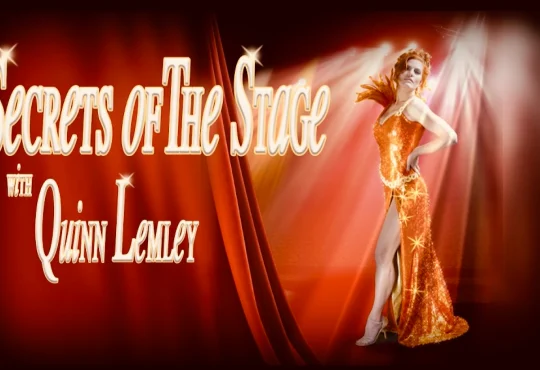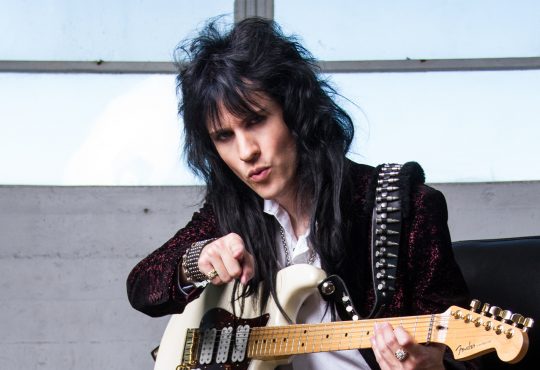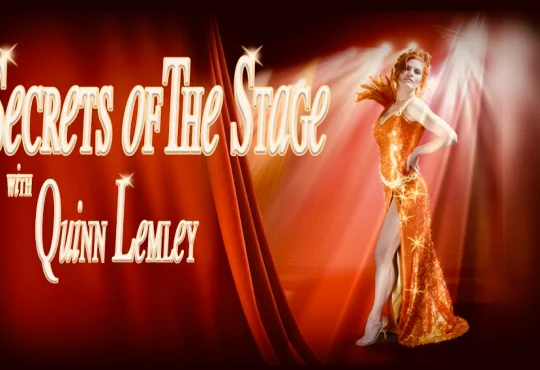Revisiting the Horror Show That Was 1978’s ‘Star Wars Holiday Special’
Before we begin this exercise in nostalgia gone awry, two things of note. I only watched The Star Wars Holiday Special for the first time, and am writing this review, as a stretch goal for The George Lucas Talk Show‘s fundraiser for Feeding America. And this review will contain spoilers for the Mandalorian Season Two finale, which I wrote about here.
I saw two phony Luke Skywalkers this month, even if both were kind of the real thing.
The first imposter Luke was in the Mandalorian finale, where he was essentially a DeepFake of Mark Hamill’s face circa Return of the Jedi pasted onto the body of actor Max Lloyd-Jones — and not a very good DeepFake, at that. That the scene was so spine-tingling in spite of the shoddy visual effects speaks to how good that show’s creative team is at understanding how to tell stories in the Star Wars universe, whether they feature new characters or digital simulacrums of old ones. This Luke looked wildly unconvincing, yet it felt appropriate for him to turn up, even briefly, at that moment in Mando and Baby Yoda’s story. (And the fight scenes with Luke hiding his face under a hood allowed Team Mando to finally give viewers a taste of Luke Skywalker, Jedi Master that the original films simply couldn’t pull off — other than that cool flip he does off the sand skiff’s diving board in Return of the Jedi.)
The second fake Luke was of much less recent provenance, and played 100 percent by the flesh-and-blood Mark Hamill, as part of 1978’s misbegotten The Star Wars Holiday Special. Star Wars fandom can be a polarizing thing, as you could remind yourself in an instant were you foolish enough to offer any kind of opinion about The Last Jedi on social media. But among those poor souls who have had the misfortune to sit through the Holiday Special, there is uniform agreement that it was by far the lowest point ever for a franchise that would later give us Jar-Jar Binks, Anakin explaining his hatred of sand, and nearly every part of Rise of Skywalker. Perhaps as a result of Hamill’s car accident a year and a half earlier, and the facial reconstruction surgery that followed, he appears in the special under several pounds of pancake makeup, eyeliner, and other cosmetics that leave him resembling less the Luke we met on Tatooine than a young Carol Channing. Between the makeup and the clear sense that Hamill, like co-stars Carrie Fisher and Harrison Ford, is not at all pleased to be part of this endeavor, the Luke of the special somehow looks less convincing than the CGI Luke from The Mandalorian.

Screengrab/Lucasfilm LTD.
These two television programs (if it’s not too insulting to the medium of television to describe the holiday special that way) were obviously not meant to be seen in such close proximity. They were made more than 40 years apart. The Mandalorian is the crown jewel of Disney+, which Disney’s chairman has described as the company’s number one priority moving forward. It is made with the full involvement of many Lucasfilm veterans, most notably producer Dave Filoni from the Clone Wars and Rebels cartoons. The holiday special was a rush job, meant to cash in on the surprise popularity of the first Star Wars film (and to help keep it in the public consciousness during the long wait for The Empire Strikes Back). After coming up with the idea of Chewbacca’s family celebrating “Life Day,” George Lucas was barely involved, and the project was produced by variety-show veterans Gary Smith and Dwight Hemion. In the years since, Lucas has done everything possible to erase the special from existence, though copies of it keep turning up on YouTube and elsewhere.
Yet seeing them within days of each other made for a striking — if, at times, excruciating — contrast. The gap between the Star Wars’ first significant TV appearance and its current TV flagship seems more than 12 parsecs wide, not just in quality, but in ambition. It’s also a great indicator of how much more closely brands are protected now versus when someone thought that what the Star Wars universe really needed was Harvey Korman in drag and blackface as a four-armed alien Julia Child impersonator. (Yes, this is a thing that happens in the special. No, it is not the worst thing that happens in the special. Maybe not even one of the three worst things.)
It is not impossible to imagine something like The Star Wars Holiday Special being made today, if only because Tom Hooper’s Cats exists. But it would be damn hard to pull off. Famous bits of intellectual property are the only currency that really matters in modern Hollywood, and they are guarded like gold. Disney’s stewardship of this franchise has had many ups, downs, and fired directors, but no one at that company would allow any of the following things to happen in a Star Wars-related show, let alone all of them at once:
* All the scenes save the ones repurposing footage from the first movie are so overlit that they look cheaper than a daytime soap opera, and no doubt helped inspire The Last Jedi director Rian Johnson’s ongoing crusade against the motion smoothing setting on widescreen TV sets.
* The title card is a hollow white, rather than the already iconic solid yellow, and no one could be bothered trying to match the font of the title crawl for the rest of the opening credits.
* Despite the protestations from the special’s writers to Lucas that Wookiees can’t talk, the opening credits are followed by nine-plus agonizing minutes of domestic drama featuring Chewbacca’s wife Mala, his father Itchy, and his son Lumpy puttering around the family tree house on the planet Kashyyyk, communicating only via growl.
* To compensate for viewers’ inability to understand the Wookiee language — and to pad out a paper-thin story to fill 97 minutes — much of the special involves Chewie’s family watching what passed for television a long time ago in a galaxy far, far away, including a holographic circus act, a music video featuring Jefferson Starship, and the aforementioned cooking show with Korman explaining the proper way to prepare Bantha loin, plus something else that I really should save for the end.
* Also, Art Carney — only a few years removed from winning an Oscar for Harry and Tonto, no less — has to carry long swaths of the Kashyyyk section as trading post manager (and secret member of the Rebel Alliance) Saun Dann, while looking utterly confused about what he’s doing there. Eventually, he just resorts to playing Ed Norton, his famous character from The Honeymooners.
* It’s clear that none of the three main actors wants to be there, with Ford looking throughout like he wants to fire his agent for getting him into this mess, Hamill looking puzzled (or just uncomfortable under all that foundation), and Fisher looking glazed until she gets to sing a terrible song about Life Day (to the tune of John Williams’ Star Wars fanfare) in the closing minutes.
* Saun Dann arrives at the tree house bearing Life Day gifts for the whole family, which includes a new electronic gadget for Lumpy (along with an instructional video that allows Korman to play another character) and a virtual-reality feature for Itchy that allows him to… masturbate to a pornographic music video featuring beloved TV star Diahann Carroll? And I don’t mean it from a certain point of view, like when Obi-Wan Kenobi told Luke that Darth Vader murdered his father. I mean that Itchy’s dad is literally enjoying holo-porn in the family living room as Carroll purrs, “I exist only for you,” and “Oh! Oh, we are excited, aren’t we?” Here’s what was once described to Vanity Fair as “soft-core porno that would pass the censors” by one of the special’s writers, Mitzie Welch:
How many people would be frog-marched off the Disney lot for even proposing such a thing, much less filming it and letting it see the light of day, in a special designed for children?
If people have any fond memories of the special at all, those tend to be for one of two segments: a cartoon that introduced Boba Fett two years before Empire Strikes Back (and which played a huge role in the disproportionately large reputation for a character who didn’t really do much before The Mandalorian brought him back to life), and a musical number featuring Bea Arthur as the bartender at the Tatooine cantina where Luke and Han met in the film. (The latter also brings back Korman as a third character, this time an alien who won’t stop hitting on Arthur, and who for some reason pours his drinks into a hole in the top of his head.) Both have their charms, especially compared to the rest of this catastrophe — simply seeing Arthur give it her all in the song (even looking happy to cuddle up next to a giant rat!) is a relief after the Luke and Leia segments each looked like hostage videos — but they also make no sense in the context of any of it. How is Itchy, who lives on a world occupied by Imperial forces, watching an animated film about an adventure his father had that involved Boba Fett working as a secret agent on behalf of Imperial bigwig Darth Vader? And why are the occupants of the tree house — including several Imperial troopers who are searching it for signs that its inhabitants are working with the Rebellion — ordered by the Empire to pause and watch the transmission from Tatooine that includes Arthur’s song?
But what else should anyone have expected, given the assembled creative talent? Smith and Hemion were from the world of variety TV, as were three of the special’s writers: Welch, Rod Warren, and Leonard Ripps. The other two writers, Bruce Vilanch and Pat Proft, had big careers ahead of them in comedy: Vilanch as Hollywood’s go-to awards-show joke writer for decades, Proft as co-writer of the Naked Gun trilogy, Police Academy, and Top Secret, among other films. This was not a group that was properly equipped to do something faithful to the spirit of the movie, especially since the one thing Lucas had been insistent on was the Life Day/Wookiee angle. All involved were set up to fail, and fail they did — spectacularly so.
Today, many comedy writers have grown up devouring Star Wars, comic books, and other sci-fi and fantasy tales, which would probably make them better suited to tell jokes and feature songs that still felt vaguely in keeping with the source material. But would anyone even try it in the first place? Marvel has a Guardians of the Galaxy holiday special in the works, but that seems to exist as a direct parody of the Star Wars one, and the Marvel Cinematic Universe is now so large that it has room to experiment on the fringes. (See also: whatever oddness WandaVision has in store, or the idea of making a legal sitcom about She-Hulk.)
But when you dive into the center of a giant revenue machine like Star Wars, things have to be played straight and true. A digitally de-aged Hamill gets to appear on The Mandalorian because that show takes the mythology and idea of the films seriously, even if it has room for jokes about Baby Yoda committing frog genocide. If you could rewrite history so that Star Wars arrived as a phenomenon in 2019 rather than 1977 — ignoring the fact that pop culture today operates the way it does in large part because of Stars Wars — there is no way that its first TV spinoff would be a variety special, or anything even slightly off-brand. Lucas would be hands-on with it, or he’d have a trusted collaborator like Filoni running things while he worked on the next film. It would probably have lots of action, would have Luke, Leia, and Han seem much more important and engaged, and it would lay seeds for the next movie in a fashion much bigger than an animated cameo by a minor character in a cool suit of armor. Everything would be focus-grouped, vetted, noted, argued about, and otherwise gone over with a fine-toothed comb.
In many ways, this is for the best. Having avoided the special all my life, I can confidently say that said life would probably be happier if it did not contain memories of Chewbacca’s dad pleasuring himself to Diahann Carroll. The Star Wars Holiday Special is not so bad it’s good, but simply awful, and something that really never should have happened.
On the other hand, corporate control of IP has made the entertainment world a more predictable, at times much less fun place. Thrilled as my inner child was to see Luke — even a chintzy facsimile of him — introduce himself to Mando, bringing a Skywalker into a show that had largely charted its own course does make the Star Wars universe feel smaller, and The Mandalorian (which already spent most of its second season seeding its own spinoffs in the same way the MCU films do) feel safer. When this much money is at stake, huge swings become harder to take. The Star Wars Holiday Special was less a big swing than a misguided attempt to teach a field goal-kicking mule to play shortstop. But the fact that anyone in 1978 had the power to conceive and produce such an obvious fiasco is oddly reassuring. I wouldn’t have sat through the whole mortifying thing if charitable dollars weren’t at stake, but my Life Day wish is that big properties like Star Wars are occasionally given room to fail this miserably in the future — because that also means there’s a chance that they could succeed in ways more powerful than we can imagine.








